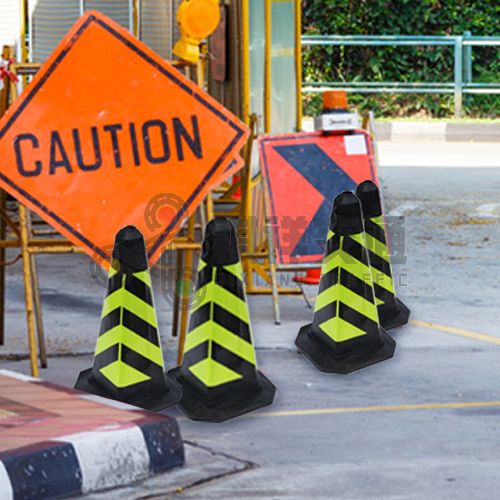Traffic cones are a common sight on roads and highways around the world. Road workers, construction workers and police use them to direct traffic, seal off areas and alert drivers to potential hazards. But have you ever wondered how traffic cones are made? Let’s take a closer look.
The first traffic cones were made of concrete, but they were heavy and difficult to move. In the 1950s, a new type of traffic cone was invented using thermoplastic material. The material is lightweight, durable, and easily molded into different shapes. Today, most traffic cones are still made of thermoplastic.
The process of making a traffic cone starts with the raw materials. The thermoplastic is melted and mixed with pigments to give it the bright orange color common on most cones. The mixture is then poured into molds. The mold is shaped like a traffic cone with a flat bottom and a top.
Once the mixture is in the mold, it is allowed to cool and harden. This may take several hours or overnight, depending on the size of the cones being made. Once the cones have cooled, remove them from the mold and cut off any excess material.
The next step is to add any additional features to the cone, such as reflective tape or a weighted base. Reflective tape is very important to make the cones visible at night or in low light conditions. The weighted base is used to keep the cone upright, preventing it from being blown over by the wind or knocked over by passing vehicles.
Finally, the cones are packaged and shipped to retailers or directly to customers. Some traffic cones are sold individually, while others are sold in sets or bundles.
While the basic process of making a traffic cone is the same, there may be some variations depending on the manufacturer. Some manufacturers may use different materials, such as rubber or PVC, for their cones. Others may make cones of different colors or shapes, such as blue or yellow cones for parking lots.
Regardless of the material or color used, traffic cones play an important role in keeping drivers and road workers safe. By directing traffic and alerting drivers to potential hazards, traffic cones are an important tool in maintaining road safety.
In conclusion, traffic cones are an important part of our transportation infrastructure. They are made from durable, lightweight materials and are available in a variety of sizes and styles. Whether you’re driving through a construction zone or navigating a busy parking lot, traffic cones can help keep you safe. Now that you know how they’re made, you’ll appreciate the design and craftsmanship that went into creating these essential safety tools.
If you are interested in traffic cones, welcome to contact traffic cone manufacturer Qixiang to read more.
Post time: Jun-09-2023







